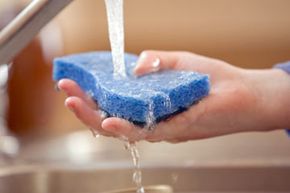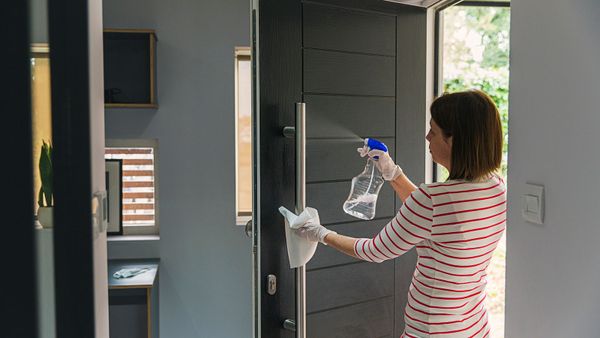If you've watched a morning news program or read a women's magazine anytime in the past 10 years or so, you probably already know that kitchen sponges are among the most germ-ridden objects in your entire house. It's pretty gross if you think about it: We use them to wipe up spills and food particles of every kind, and then we leave them sitting out at room temperature, nice and damp, overnight. And then we wash our dishes with them again.
Many of us clean our kitchen sponges by rinsing them with hot soapy water or running them through the dishwasher, but can you truly disinfect a kitchen sponge? Fortunately (since it wouldn't be very practical or environmentally friendly to throw them away after a single use), the answer is yes you can disinfect them, and you probably already have the most effective disinfectants right there in your kitchen.
Advertisement
One way to disinfect a kitchen sponge is to heat it in the microwave -- but be sure to do it safely, and never microwave a sponge containing metal! While most germs can only survive about 30 seconds in the microwave, you'll need to nuke your kitchen sponge for two minutes at full power to eliminate E. coli. Before you hit "start," be sure to saturate your sponge with water, since a dry sponge may catch fire. Look out for a burst of steam when you open the microwave door, and let the sponge cool before you remove it -- it will be very hot! You may want to use tongs to pick it up.
If you'd rather not deal with the steam or the risk of fire, you can simply soak your sponge for five minutes in a solution of 3/4 cup bleach to 1 gallon of water. (Bonus: If you mix the bleach solution in your kitchen sink, you can clean and sanitize your sink at the same time.)
For an eco-friendly way to kill most bacteria, soak sponges for at least five minutes in full-strength white vinegar then let them air-dry (in the sun, if possible). If you decide to go the microwave route, you may still want to use a little vinegar to freshen the sponge before you nuke it so you don't end up with a house that smells like hot, musty sponge. Simply add a couple tablespoons of vinegar to a cup of water, soak your sponge and follow the microwave instructions above.
Advertisement


